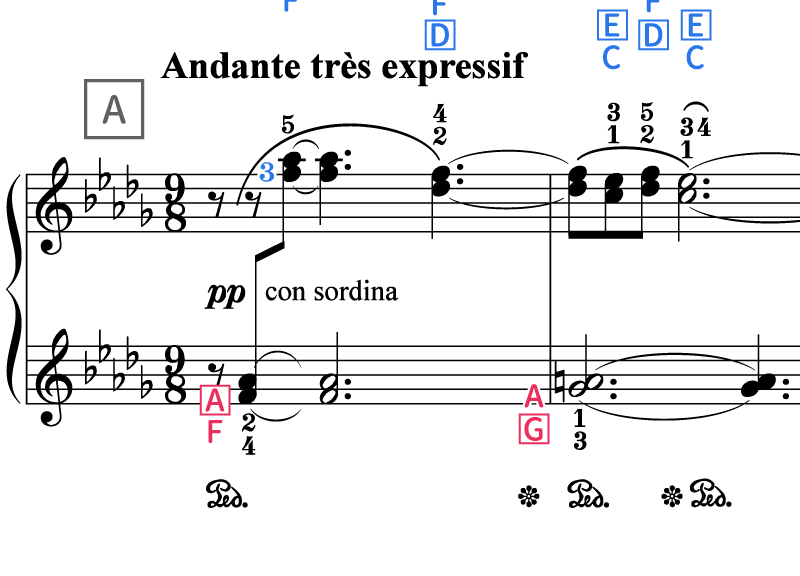How To Play (How To Practice)
1. Level : 5(Hard 1)
The opening section is slow, but the level is 5 because of the 16th notes with the left hand and polyphony in the following section.
2. Beginning
1. To ring the higher notes of the thirds
The higher notes of the thirds is the melody. So make it louder than the lowers.
Slightly lift up the finger of the lowers so that the only finger of the highers can go to the bottom of the keys.
That way you can sound the melody clearly.

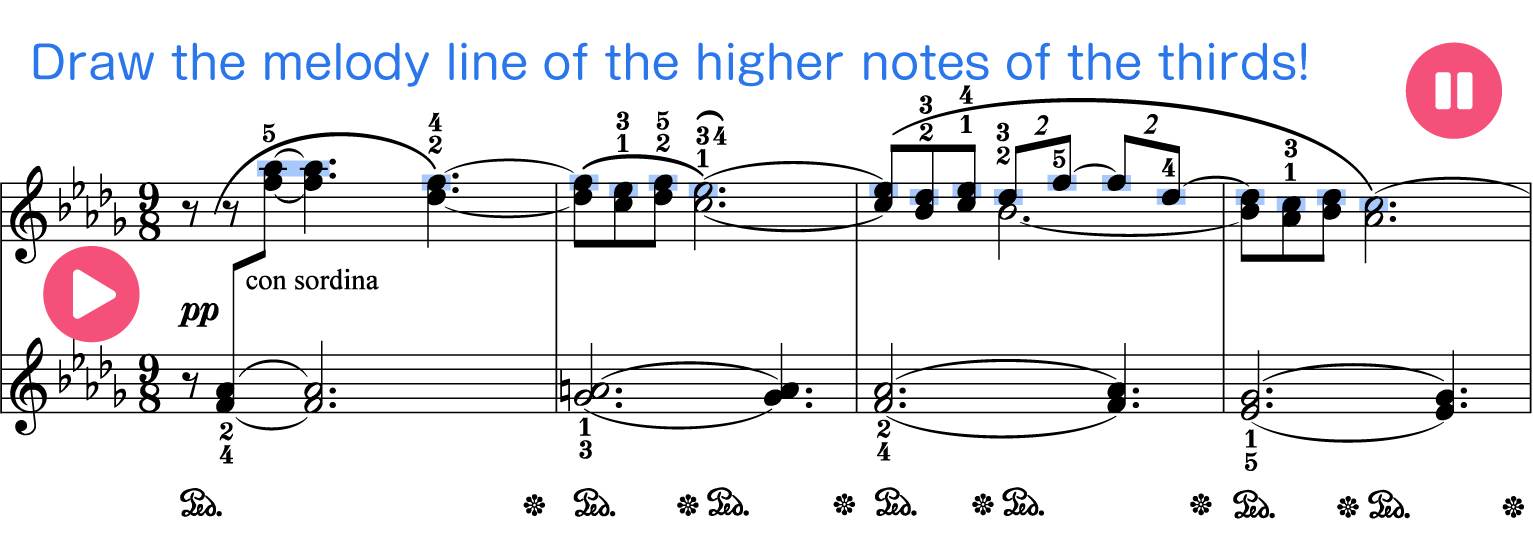
Height of the black keys is different from that of the white keys. You should consider it and decide your hand's form.
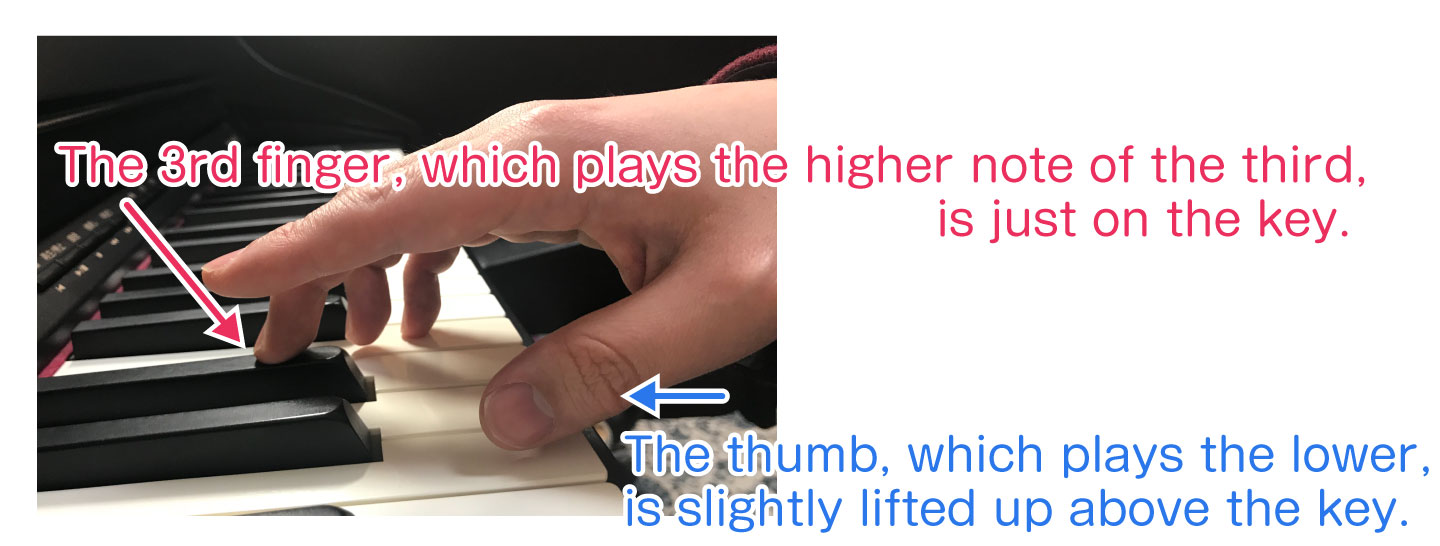
2. To ring the top notes of the chords splendidly.
When you make the top notes of the chords clear, the music becomes brighter and lighter.
When you sound even the bottom notes louder, it becomes deeper and heavier.
The former way suits for this piece.


3. For beautiful and natural tempo variations
Here are some points of tempo variations.
1. In One Phrase
The basic phrasing of this phrase is to start slowly, accelerate gradually and calm down in the end.
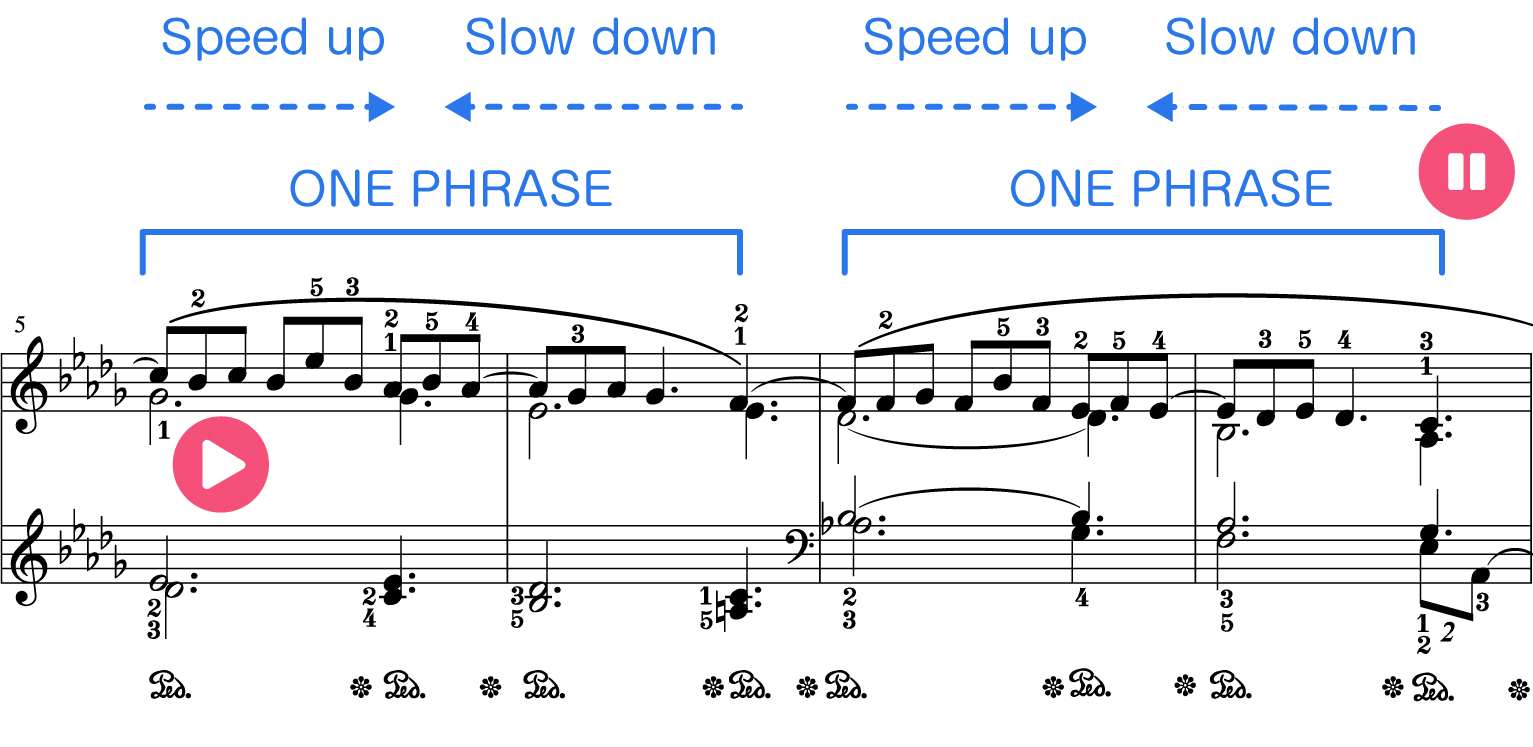
2. To take a second at the moment of the jump
Sing the melody for trial. Do you want to take a second at the moment of jumping to the higher note, don't you?
If so, you should express that also with the piano.
This technique is very effective for beautiful phrasing but not all of the time. Sometimes it is better to play straightly. So it is important to think about the best phrasing.


3. Long phrasing
This phrase of the 6 bars consists of the three phrases of each 2 bars, so you should make the long phrasing not only each phrase
Where is the climax of the long phrase? Let's think about dynamics and tempo variation of the long phrasing.
As an example, our recording is below. Check it out.
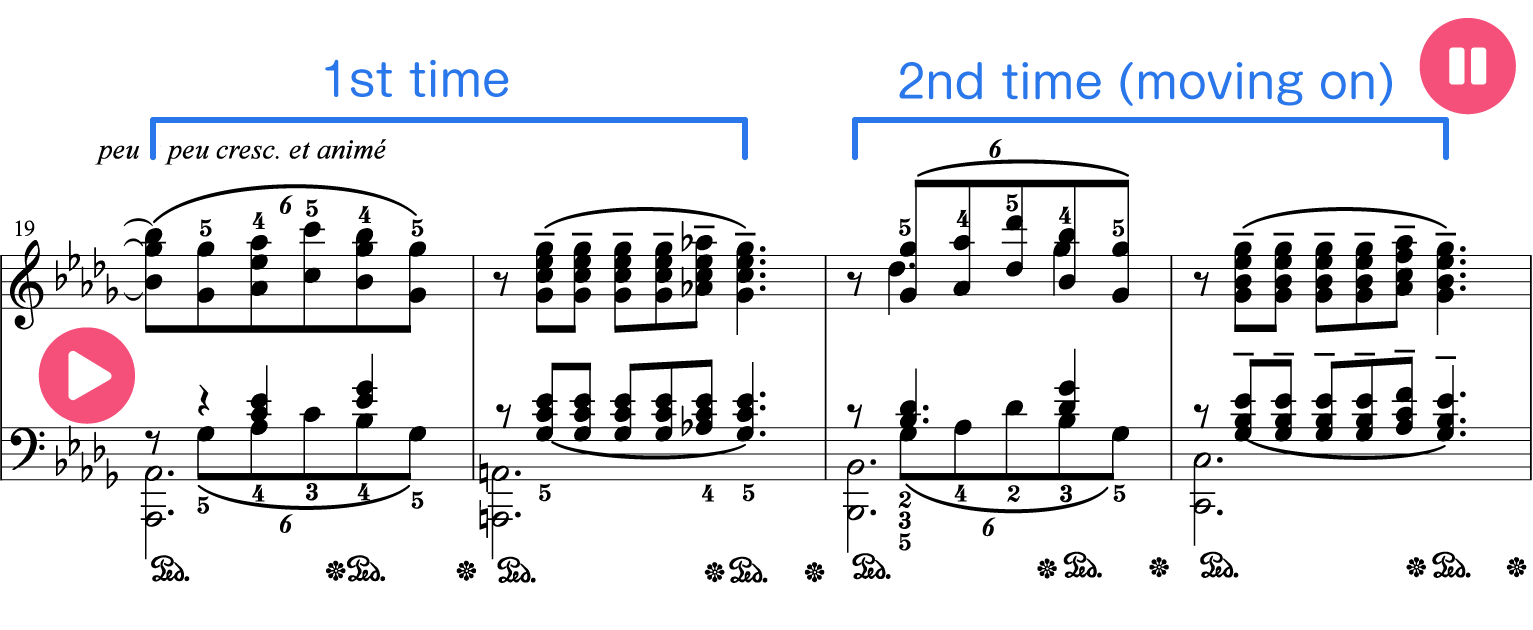

4. Expression of arpeggio
Speed of arpeggios isn't witten on music, how do you play? It becomes splendid when you play it in a flash, it becomes dreemy when you play it softly with tempo variation.
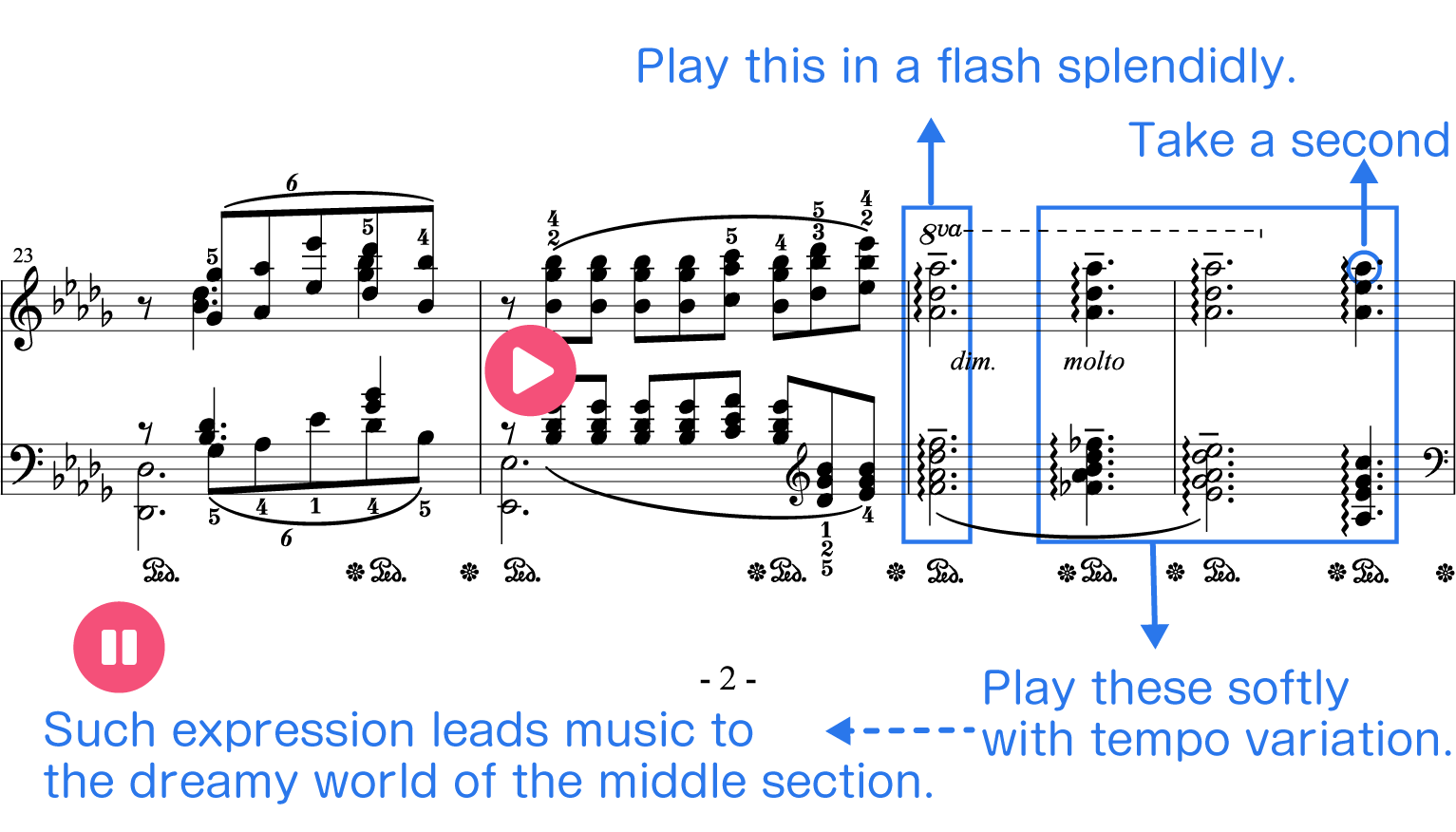
5. Easy fingering for beginners
The fingering that you can play in legato is witten in black color.
For beginners, another easy fingering is witten in blue color.
Try it!


6. How to count duplet
You should try counting the duplets in 16th.
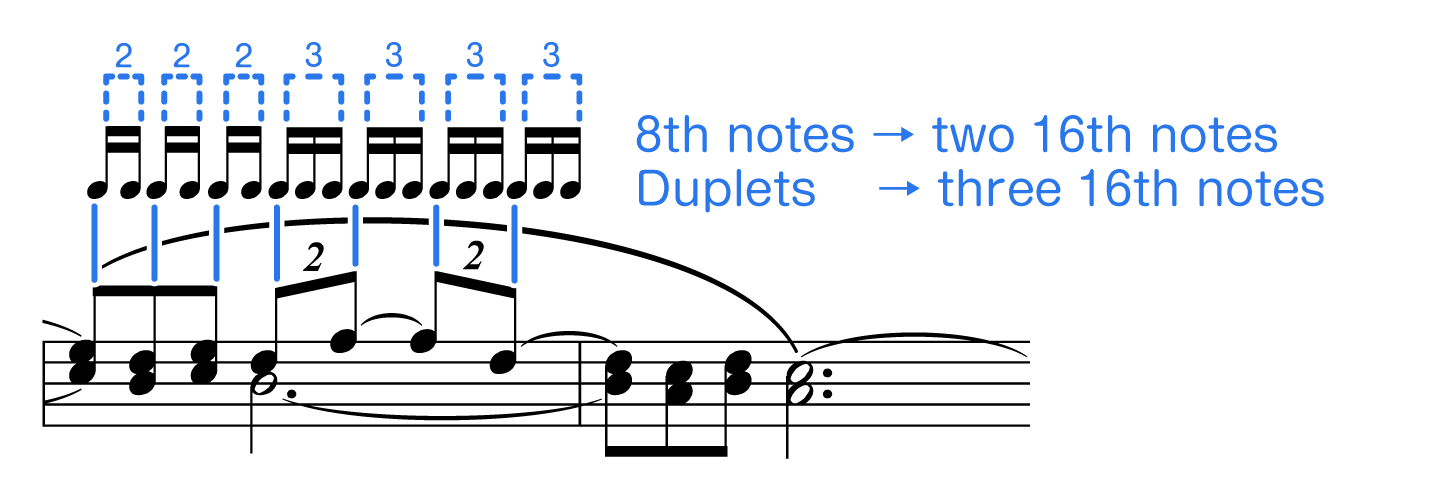
7. Pay attention to the chords just after jumping
Just after jumping, you need brake your left hand to play in pp.
So that you should jump quickly.

3. Middle section-Recapitulation
1. There is hard 16th continuation. Fix your left hand's form into the chords's form.

Here is pp but it is difficult to control dynamics.
So you should fix your hand's form into the chord's form so that you can put the hand closer to the keys, and press them softly.

2. How to play arpeggios smoothly
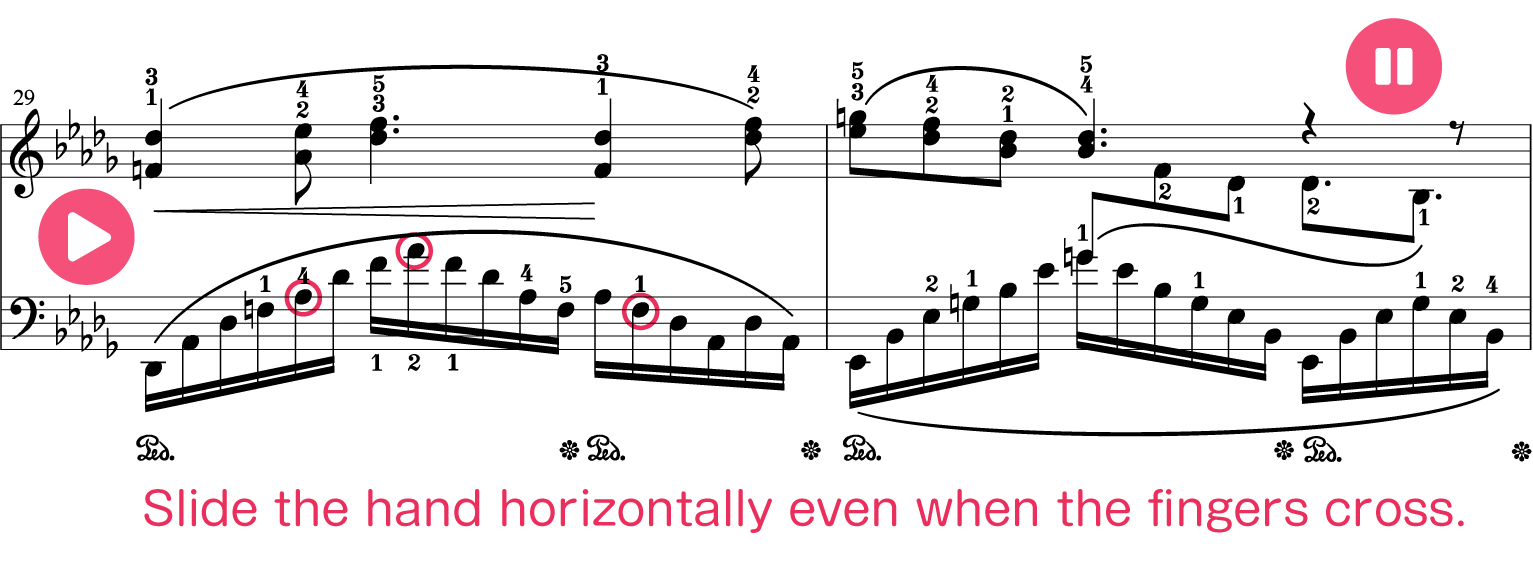
In these arpeggios, you need cross your 4th or 2nd finger over the thumb and pass the thumb under the other fingers.
At that time, you shouldn't move your wrist up and down or twist it because that makes it harder to control dynamics and may cause unnatural accents.
So you should suppress useless movement and slide the wrist horizontally.
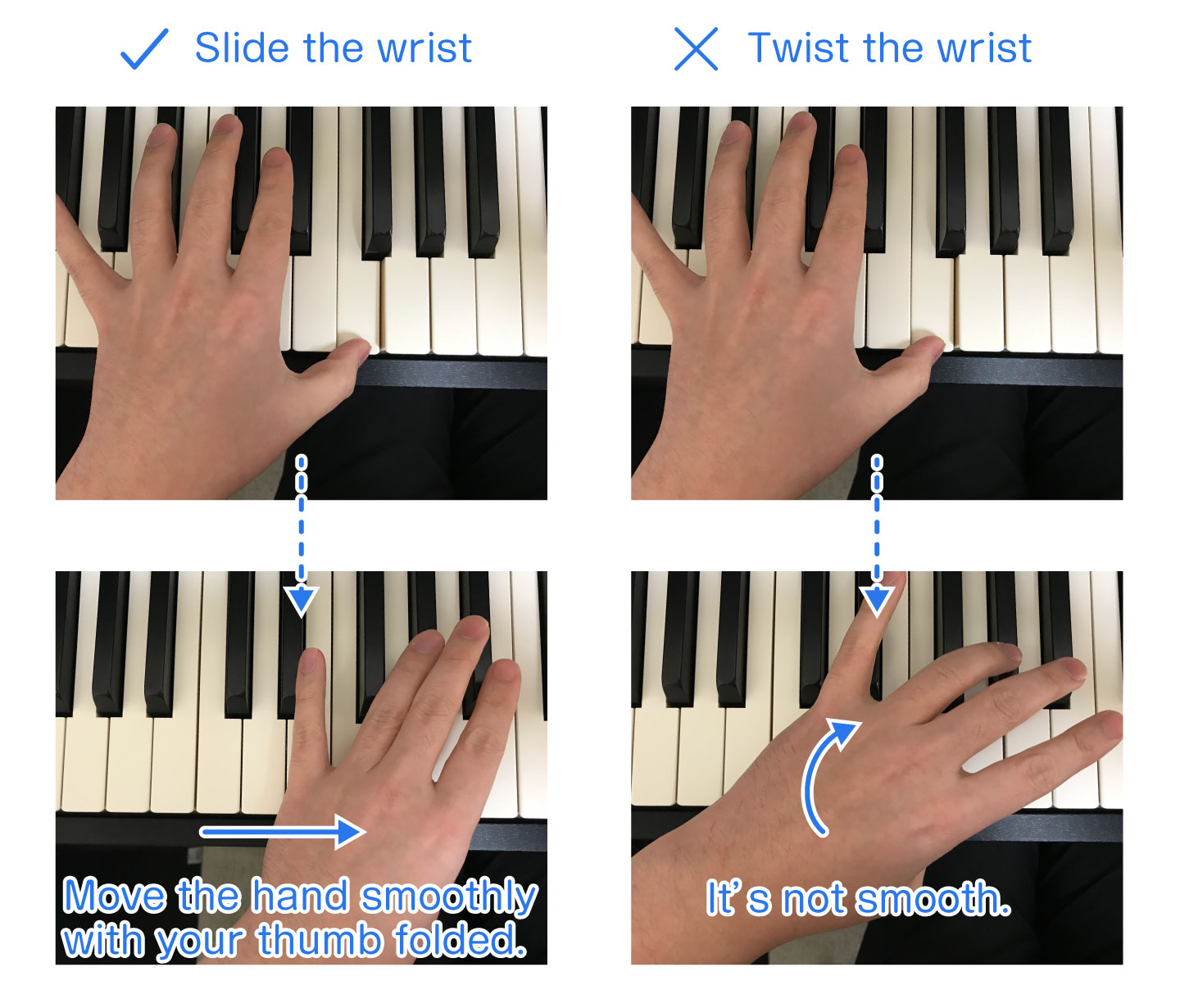
3. Hand's form to express the counter line

Slightly lift up the fingers of the notes which you want to lower, and express the melodies of alt and tenor.
[Further] It's not good only to make 2 lines louder. For further beautiful play, it is great to play 2 lines like the duet by phrasing (controling dynamics and rhythm of the phrase).
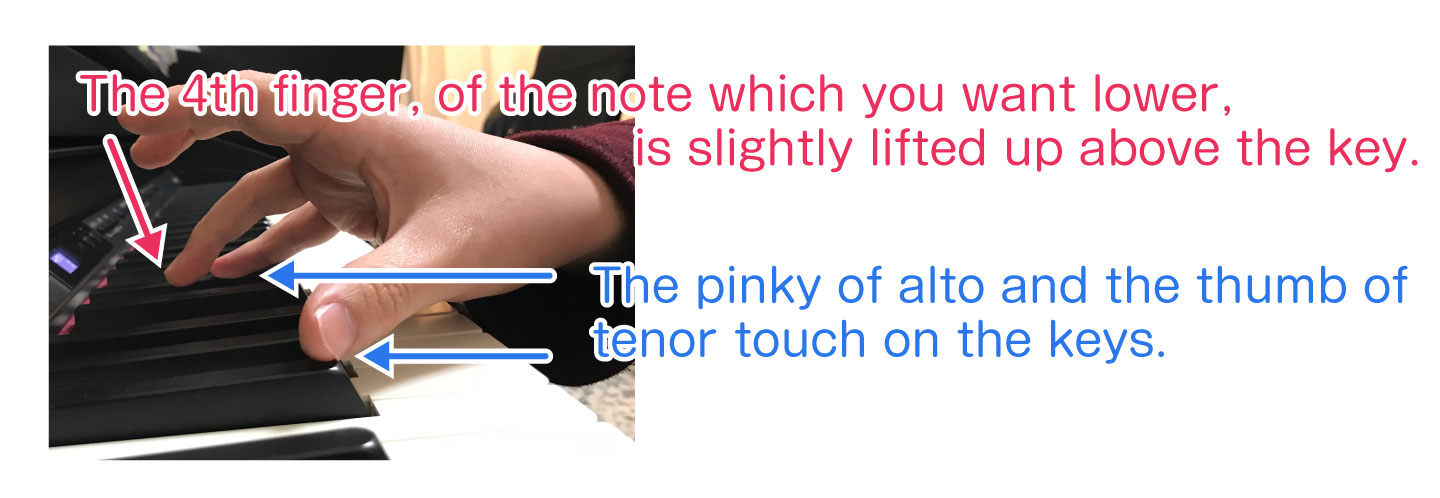
4. Level : 5(Hard 1)
The opening section is slow, but the level is 5 because of the 16th notes with the left hand and polyphony in the following section.
5. Beginning
1. Ring the higher notes of the thirds
The higher notes of the thirds is the melody. So make it louder than the lowers.
Slightly lift up the finger of the lowers so that the only finger of the highers can go to the bottom of the keys.
That way you can sound the melody clearly.


Height of the black keys is different from that of the white keys. You should consider it and decide your hand's form.

2. Ring the top notes of the chords splendidly.
When you make the top notes of the chords clear, the music becomes brighter and lighter.
When you sound even the bottom notes louder, it becomes deeper and heavier.
The former way suits for this piece.


3. For beautiful and natural tempo variations
Here are some points of tempo variations.
1. In One Phrase
The basic phrasing of this part is to start slowly, accelerate gradually and calm down in the end.

2. Take a second at the moment of the jump
Sing the melody for trial. Do you want to take a second at the moment of jumping to the higher note, don't you?
If so, you should express that also with the piano.
This technique is very effective for beautiful phrasing but not all of the time. Sometimes it is better to play straight. So it is important to think about the best phrasing.


3. Long phrasing
This phrase of the 6 bars consists of the three phrases of each 2 bars, so you should make the long phrasing, not the short one including only one phrase.
Where is the climax of the long phrase? Let's think about dynamics and tempo variations of the long phrasing.
As an example, our recording is below. Check it out.


4. Expression of arpeggio
Speed of arpeggios isn't written on music, how do you play? It becomes splendid when you play it in a flash, it becomes dreemy when you play it softly with tempo variation.

5. Easy fingering for beginners
The fingering that you can play in legato is written in black color.
For beginners, another easy fingering is written in blue color.
Try it!


6. How to count duplet
You should try counting the duplets in 16th.

7. Pay attention to the chords just after jumping
Just after jumping, you need to brake your left hand for a moment to play in pp.
So that you should jump quickly.

6. Middle section-Recapitulation
1. The hard 16th continuation. Fix your left hand's form into the chords's form.

It is difficult yo keep pp when you play the fast 16th notes like these.
You should fix your hand's form into the chord's form so that you can put the hand closer to the keys, and press them softly.

2. How to play arpeggios smoothly

In these arpeggios, you need cross your 4th or 2nd finger over the thumb and pass the thumb under the other fingers.
At that time, you shouldn't move your wrist up and down or twist it because that makes it harder to control dynamics and may cause unnatural accents.
So you should reduce needless movement and slide the wrist horizontally.

3. Hand's form to express the counter line

Slightly lift up the fingers of the notes which you want to lower, and express the melodies of alto and tenor.
[Further] It's not good only to make 2 lines louder. For further beautiful play, it is great to play 2 lines like the duet by phrasing (controlling dynamics and rhythm of the phrase).


